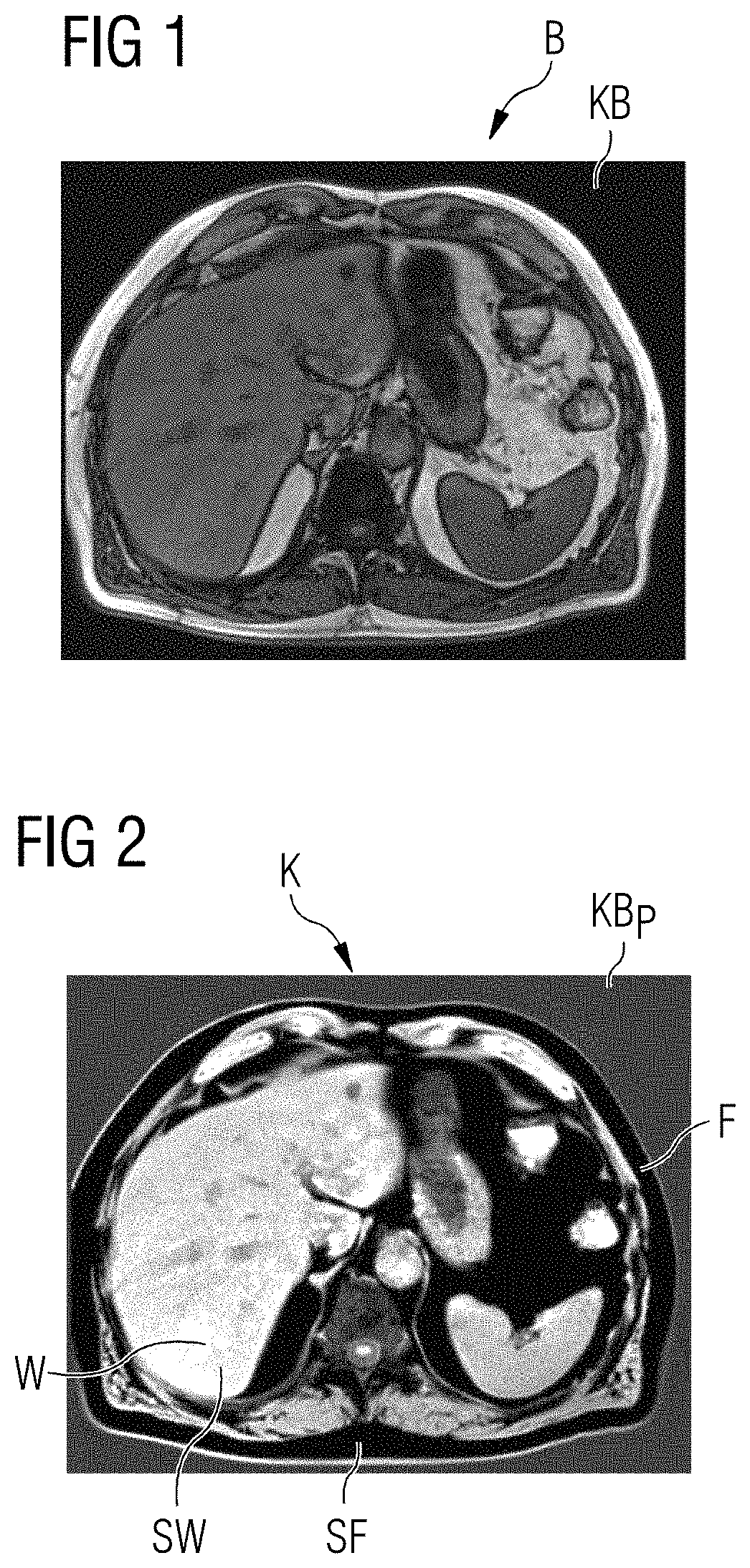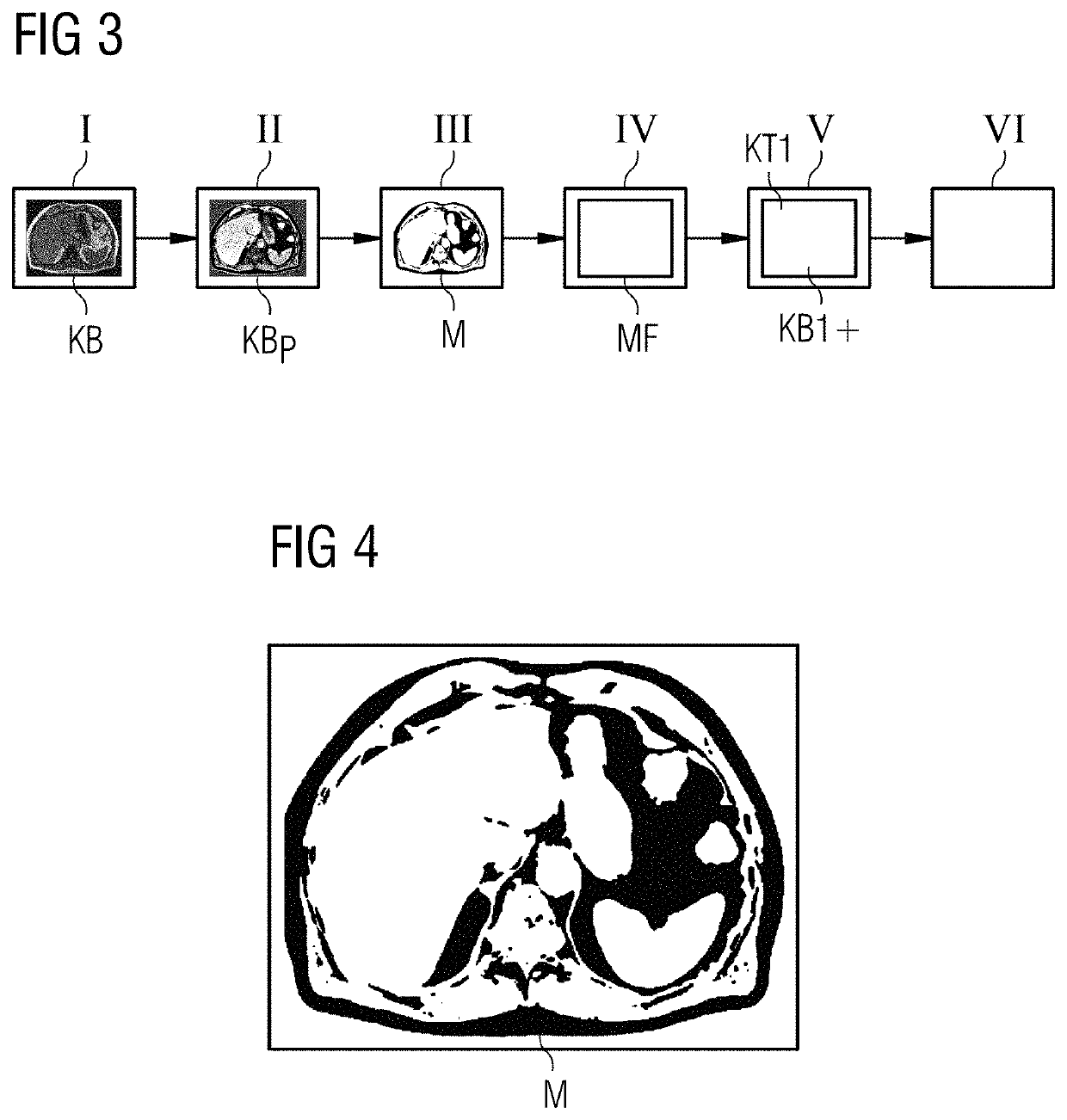Method, computer and imaging apparatus
a computer and imaging technology, applied in the field of normalizing magnetic resonance images, can solve the problems of problematic and general satisfactory normalization of images, and the methods known at presen
- Summary
- Abstract
- Description
- Claims
- Application Information
AI Technical Summary
Benefits of technology
Problems solved by technology
Method used
Image
Examples
Embodiment Construction
[0052]FIG. 1 depicts a contrast image KB of the abdominal cavity. Different image signals W, F of two substances SW, SF can be clearly identified, wherein the gray tones, i.e. the values of the pixels of the image correspond to the amount of the respective image signals B, also |W−F|. The lighter a pixel, the higher the amount of the respective image signals B (|W−F|). In this case, the first substance W is water and the second substance F is fat.
[0053]FIG. 2 depicts a phase-corrected contrast image KBP of the contrast image KB in FIG. 1 after a phase correction. Here, the image signals W, F of the two substances SW, SF are no longer present as the amount of the respective image signals B, but are present as the contrast K with (W−F). In this depiction, therefore, the values of the pixels of the image (gray tones) correspond to the difference of the first image signal W minus the second image signal F. The lighter a pixel, the greater the influence of the first image signal W and he...
PUM
 Login to View More
Login to View More Abstract
Description
Claims
Application Information
 Login to View More
Login to View More - R&D
- Intellectual Property
- Life Sciences
- Materials
- Tech Scout
- Unparalleled Data Quality
- Higher Quality Content
- 60% Fewer Hallucinations
Browse by: Latest US Patents, China's latest patents, Technical Efficacy Thesaurus, Application Domain, Technology Topic, Popular Technical Reports.
© 2025 PatSnap. All rights reserved.Legal|Privacy policy|Modern Slavery Act Transparency Statement|Sitemap|About US| Contact US: help@patsnap.com



